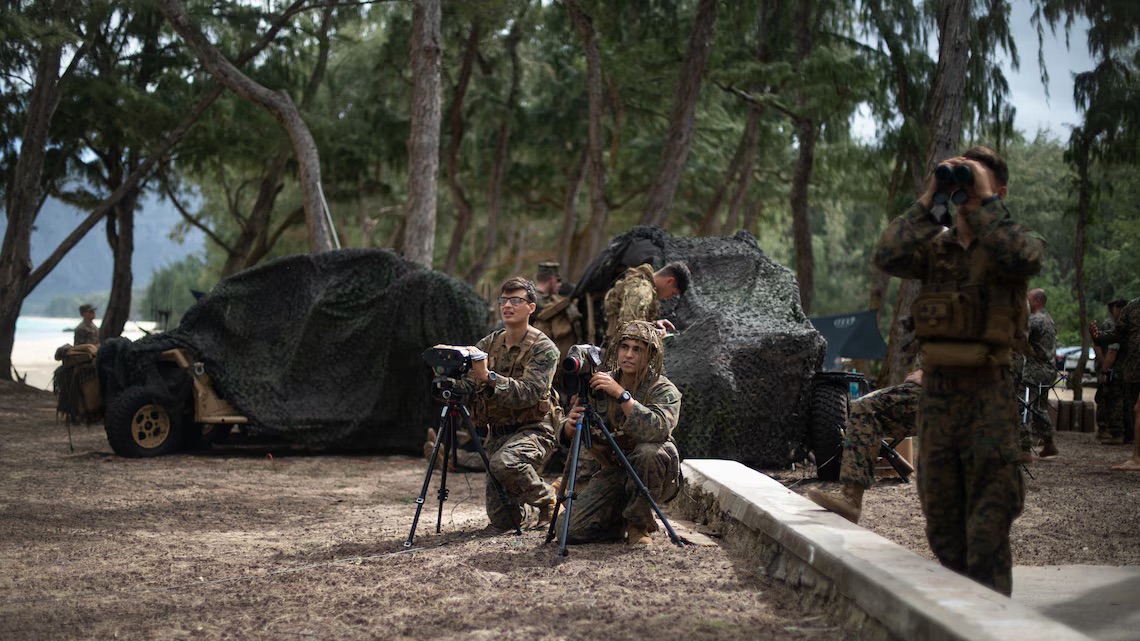
MARINE CORPS TRAINING AREA BELLOWS, HI —
With modernization and pacing threats challenging the Marine Corps to improve in new ways, 3d Marine Littoral Regiment remains at the forefront of innovation. One such advancement in the regiment’s training methodologies and warfighting tactics is the Littoral Reconnaissance Team concept. From January 18-25, 2024, Marines with 3d Littoral Combat Team spent a week at Marine Corps Training Area Bellows, experimenting with the LRT concept.
“An LRT is a low-signature, easily deployable team that uses multi-discipline sensors and collection sources for reconnaissance and counter-reconnaissance in the littoral zone,” said Sgt. Jordan James, chief scout with 3d LCT. “During this field operation, the LCT used an LRT to test day and night data collection and share assets on naval vessels.”
Within an LRT are Signals Intelligence/Ground Electronic Warfare Marines, Scout Marines, a Small Unmanned Aircraft Systems team, and a Maritime Surveillance Team. Most of these elements are already organic to 3d LCT’s intelligence section. The sections traditionally work independently, but when employed together they can enhance 3d LCT’s capabilities in a way that better fits the requirements of stand-in force operations.
“We are using the landward portion of the littorals to establish an expeditionary base and conduct operations for maritime domain awareness in support of the Joint Force’s ability to conduct sea denial and sea control.”
CWO4 Corey Sullivan, Signals Intelligence and Electronic Warfare Operations Officer with 3d MLR
The Marines also made sure to have real targets by working with the U.S. Coast Guard to have vessels pass by at random throughout the day – their transportation routes and hull sizes unknown to the Marines. When the vessels were detected, the LRT locked-on visuals, sent the Stalker VXE30 sUAS to get surveillance imagery, used artificial intelligence object recognition to identify the type of vessel, pinpoint its exact location, and surveyed radio activity using electromagnetic spectrum radars – all while broadcasting live updates to its higher headquarters.
“A Marine can see a ship on the horizon and launch the sUAS in a couple of minutes or less,” said Sullivan. “These programs cut down the time required to relay information, thereby speeding up the sensor-to-shooter kill web.”
“We may be using computer programs and artificial intelligence to reduce some of our workload, but it still takes diligence and determination from the Marines,” said James. “We’re here, in the Pacific, ready to answer any call to action that comes.
In doing this training and having this skill and mindset, 3d MLR expands the potential of the LCT and pushes the bounds of what it means to be “in the air, on land, and sea.”
Story by Sgt Jacqueline Parsons | 3rd Marine Division

